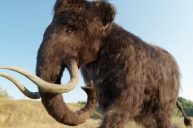Sometimes things in the past should stay in the past. Then, other times people want to bring things from the past back. What if I told you that animals that have long been extinct could be making a comeback? That's right, scientists are in the process of trying to help the dodo bird return from extinction.
Could The Dodo Bird Actually Return From Extinction?
Colossal Biosciences, the world's first "de-extinction company" is on a mission to bring back some of the long extinct creatures of the past. Their current targets are the woolly mammoth, tasmanian tiger, and the dodo bird. While the company is on track to have their first woolly mammoth baby born in 2028, through an artificial womb, that is not the only exciting news happening.
The CEO of the company, Ben Lamm, said, "the woolly mammoth wouldn't be the first extinct species to be born by that year." He argues that the mammoth's long gestation period will inhibit it from being the first animal to return from extinction. Instead, an animal with a shorter gestation period, like the dodo bird, would be making its comeback first.
A Background And A Future
There is still debate among the scientific community on how these birds went extinct. However, accounts agree that they were easy to catch. Despite their reputation of being dumb, the dodo bird appears to be more intelligent than people once thought. They were simply easy to catch because they had not yet learned to fear humans.
Unfortunately for the dodo bird, humans were not their only predators. Furthermore, they only lay one egg per year and that egg became food for new and incoming species. Perhaps that helped lead to their extinction. Colossal Biosciences wants to ensure that once these animals return from extinction they are not hunted or harmed.
Lamm stated, "We aren't bringing animals back to hunt them and we aren't bringing animals back to eat them."
Additionally, Lamm doesn't intend on bringing just one of each species back. He argues that that would not be considered a success. Then, he stated, "I think that you have to engineer in enough genetic diversity so you have small populations." He continued, "I think we will probably engineer small herds of mammoths, thylacine and dodos and others."





